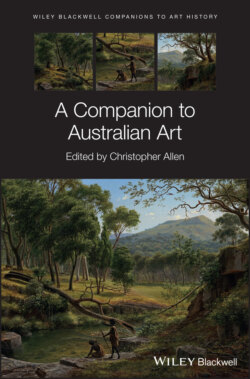Читать книгу A Companion to Australian Art - Группа авторов - Страница 41
Conclusion
ОглавлениеGiven Australia’s relatively short history of European settlement, and relatively small population (25 million in 2018, occupying a large country in which nearly half the total population, however, is concentrated in an around Sydney and Melbourne) the nation has been, and continues to be, well served in its public access to art museums and galleries.
The nineteenth century colonial cultural experience closely reflected the new museology – driven by principles of self-improvement and broad access to education – which had evolved in Britain, and taste and public collecting were inevitably oriented to Britain. It was not until the latter part of the twentieth century that notable shifts in public museology brought significant changes, which better reflected Australia’s changing perspective on its place in the world, and its post-colonial, post-WWII relationship with its own region. Australia’s public art museums have needed to focus on, and accommodate, key issues such as the embrace of modernism and contemporaneity (the NGV in Melbourne only acquired its first Picasso painting in 1986); the need to support Australia’s own artists and art systems; the rise of the contemporary Indigenous art movement, and how that art would be collected and exhibited in the nation’s art museums, large and small; and the process by which the visual cultures of Asia would be better understood, collected and exhibited, either through permanent collections or temporary exhibitions.
The culture of the temporary exhibition, particularly the genre of the large, imported “blockbuster”, has been transforming, driving ever-increasing audiences, and focussing government decision-making on infrastructure funding, tied as it inevitably is, to financial considerations of the economic benefits of cultural tourism. At the same time, governments at all levels have been reducing operating funding, demanding a greater level of self-sufficiency through entrepreneurial activities, and philanthropic and sponsorship support. That said, Australian art museums, in common with many others elsewhere, are increasingly searching for new, relevant and credible criteria for assessing the real social, civic and cultural value of its museums and galleries sector. In such a strongly multi-cultural country, it is an interesting and essential debate. The great challenge to Australian art museology is balancing its traditional and necessary commitment to Australian art and artists, in an increasingly global environment, with an international perspective. In many ways, this simply reflects Australia’s geographic and socio-political position on the Pacific Rim, a country with ancient indigenous, and more recent non-indigenous cultures, a British-European history of settlement, and social structure, and a necessary post-WWII openness to both the US and its economy and culture, and Australia’s regional Asia-Pacific neighbours.
